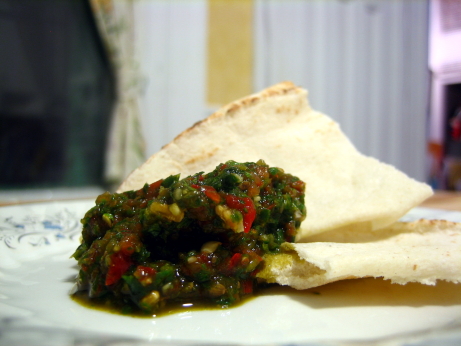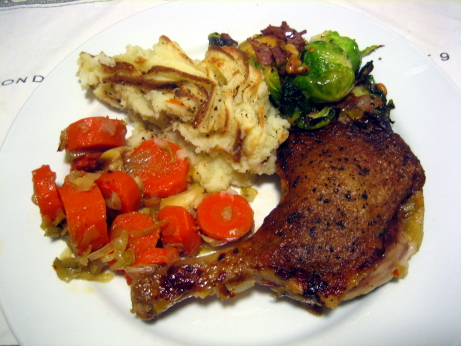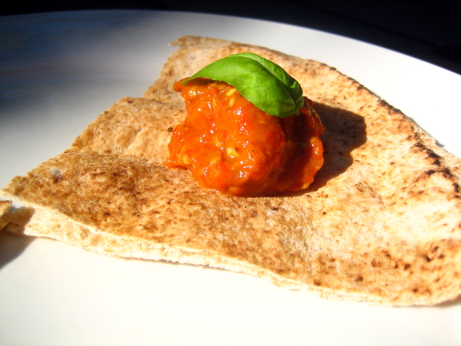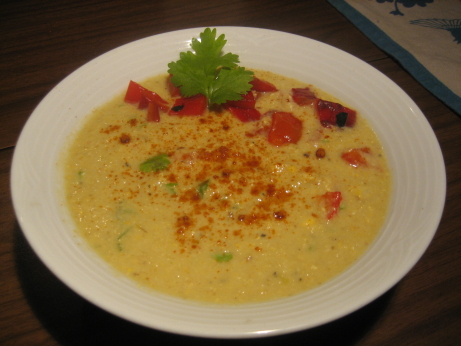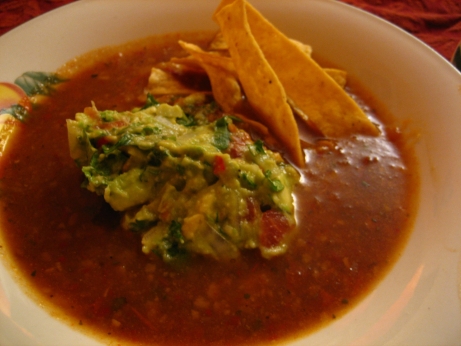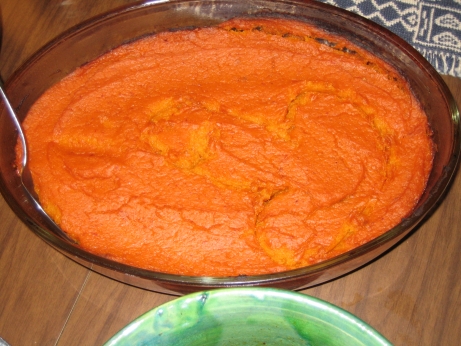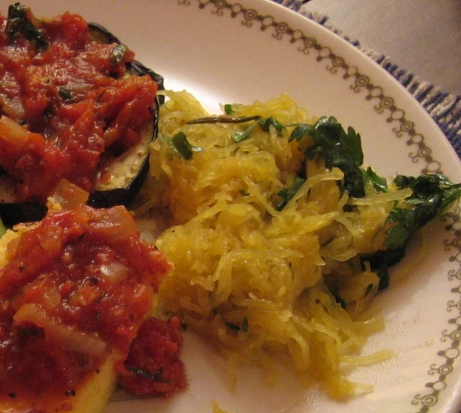I know next to nothing about the republic of Georgia, but this salsa has me pricing out flights. This salsa, and the stew I added it to are probably the most memorable things I’ve eaten this year. None of the ingredients used in the dish are particularly exotic, but the flavour is unlike anything I’ve had before. It’s a salsa of coriander seed, fenugreek, cilantro, basil, garlic, red bell pepper, jalapeño, red wine vinegar, and salt. The spices are ground in a mortar and pestle, and then everything goes for a spin in the food processor. I haven’t used fenugreek much in my cooking, although it’s not hard to find, its unfamiliar flavour probably has a lot to do with what appeals to me so much about this sauce.
The word salsa is misleading in this recipe, there’s nothing Latin about it, it’s closer to Indian than anything else. The basil, cilantro, and red pepper make this a very fresh tasting salsa, but it’s power comes from the wallop of garlic and jalapeño. The sweetness of the coriander seeds is so unlike the cilantro leaves it’s hard to think of them coming from the same plant. I’m utterly unable to describe the way fenugreek tastes, or what it adds to this dish. I just went into the kitchen and chewed on a few seeds to try to transmogrify flavour into words, but no luck. Fenugreek makes this taste good, and that’s the best I’m going to come up with. Maybe that’s enough. This salsa takes 10 minutes to make, try it and you’ll see what my incoherence is all about.
I have no idea if this flavour combination has staying power for me, or it’s a passing fad, but for right now this salsa is excitingly different.
